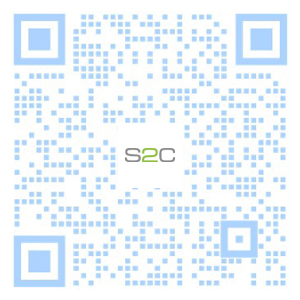
A Brief History of S2C: A Vision for FPGA Prototyping Realized |
Daniel Nenni Published on 04-27-2015 05:00 AM
FPGA prototyping is beginning its move to the forefront of design and verification. More and more companies are turning to this technology not only for in-circuit testing and earlier software development but also for refining, validating, and implementing chip architecture. The increases in design size and complexity as well as the utilization of globalized design teams are driving the need for greater use of FPGA prototyping. This is exactly the vision that the founders of S2C, Toshio Nakama and Mon-Ren Chene had for the technology when they first started the company back in 2003.
Back in the late 90’s and early 2000’s, Nakama and Chene both worked for Aptix, a leader in reconfigurable prototyping systems. Although the prototyping technology at the time worked well, it was very expensive and thus cost prohibitive for many design houses. That’s when the two founders decided to get together to see about creating a prototyping technology that was cost-effective but still delivered high performance.
FPGAs were widely used at the time and were much less expensive and more flexible than ASICs. It made sense to build a prototyping board around an FPGA. The entrepreneurs had their first product idea. Rather than seeking outside investment, the two pooled their own money to kick-start S2C, Inc. and then quickly launched their first FPGA-based prototyping board.
They recognized a couple of things early on. First, it was important to constantly listen and learn from their customers to build products that provided the best value. The company still operates on that primary foundation today. It was during these in-depth discussions with customers that they recognized something else – that FPGA prototyping technology had the potential to do so much more than the aforementioned in-circuit testing. Through significant research and development, S2C could provide its customers the ability to utilize the inexpensive and high-performance nature of FPGA prototyping for other application areas and tackling even the largest designs.
What they envisioned was a complete prototyping platform that not only included the hardware components but also software to ease the strains of partitioning and debug. That vision extended into the ability to link the simulation environment with the prototyping environment to enable early algorithm/architecture exploration, accelerate design verification and increase test coverage.
Even after these breakthroughs, FPGA prototyping was still being thought of as only useful for small to medium size designs. Nakama and Chene had a plan to change that too. Its true that advances in FPGAs in recent years have increased gate capacity and reduce the partitioning issue, but for companies designing large designs, FPGA prototyping still had some hurdles to overcome. Managing multiple FPGA prototyping boards across disparate design teams is a daunting task that FPGA prototyping hadn’t been able to address. S2C tackled this issue by giving those companies the ability to connect up to 32 FPGA prototyping boards together in one chassis with the added benefit of being able to manage the boards and design teams remotely via the cloud. Now companies could truly take advantage of FPGA prototyping technology.
A large electronics company recently visited validated the approach taken by S2C. This electronics company had themselves invested millions of dollars and thousands of man-hours to create an in-house solution managed by a team of 20 engineers. The result – a solution that is very similar to what S2C has developed. Had S2C’s FPGA prototyping solutions been available to this electronics company, imagine the money that could have been saved and innovations that could have been achieved by reallocating those precious engineering resources.
Today, S2C has grown to be a world leader in FPGA prototyping solutions. The Company boasts an impressive 200+ customers and 800+ system installations in leading consumer electronics, communications, computing, image processing, data storage, research, defense, education, automotive, medical, design services, and silicon IP organizations.
The success of the Company has been in large part due to the Complete Prototyping Platform vision for FPGA prototyping at any design stage, for any design size, and across multiple geographies. This vision has been realized due to sheer determination and the guiding principle at S2C to provide customers value so that they can innovate and become the geniuses of their own designs.



This site uses cookies to collect information about your browsing activities in order to provide you with more relevant content and promotional materials, and help us understand your interests and enhance the site. By continuing to browse this site you agree to the use of cookies. Visit our cookie policy to learn more.